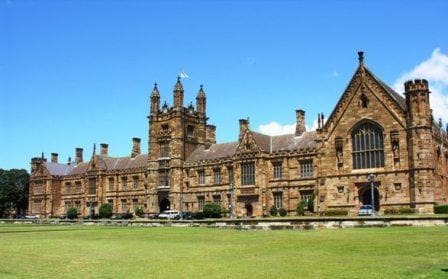 A Fascinating Story
A Fascinating Story
A lady in a faded gingham dress and her husband,dressed in a homespun threadbare suit, stepped off the train in Boston, and walked timidly without an appointment into the president of Harvard's outer office.
The secretary could tell in a moment that such backwoods, country hicks had no business at Harvard and probably didn't even deserve to be in Cambridge.
She frowned. "We want to see the president," the man said softly. "He'll be busy all day," the secretary snapped. "We'll wait," the lady replied. For hours, the secretary ignored them, hoping that the couple would finally become discouraged and go away.
They didn't. And the secretary grew frustrated and finally decided to disturb the president, even though it was a chore she always regretted to do. "Maybe if they just see you for a few minutes, they'll leave," she told him.
And he sighed in exasperation and nodded. Someone of his importance obviously didn't have the time to spend with them, but he detested gingham dresses and homespun suits cluttering up his outer office. The president, stern-faced with dignity, strutted toward the couple.
The lady told him, "We had a son that attended Harvard for one year. He loved Harvard. He was happy here. But about a year ago, he was accidentally killed. And my husband and I would like to erect a memorial to him, somewhere on campus."
The president wasn't touched, he was shocked. "Madam," he said gruffly. "We can't put up a statue for every person who attended Harvard and died. If we did, this place would look like a cemetery". "Oh, no," the lady explained quickly. "We don't want to erect a statue.
We thought we would like to give a building to Harvard." The president rolled his eyes. He glanced at the gingham dress and homespun suit, then exclaimed, "A building! Do you have any earthly idea how much a building costs? We have over seven and a half million dollars in the physical plant at Harvard." For a moment the lady was silent.
The president was pleased. He could get rid of them now. And the lady turned to her husband and said quietly, "Is that all it costs to start a University? Why don't we just start our own?" Her husband nodded.
The president's face wilted in confusion and bewilderment. And Mr. And Mrs. Leland Stanford walked away, traveling to Palo Alto, California where they established the University that bears their name, a memorial to a son that Harvard no longer cared about.
********
"You can easily judge the character of others by how they treat those who can do nothing for them or to them." Malcolm Forbes


1 comment:
I found from net that
History of Stanford
---------------------
The Birth of the University
In 1876, former California Governor Leland Stanford purchased 650 acres of Rancho San Francisquito for a country home and began the development of his famous Palo Alto Stock Farm. He later bought adjoining properties totaling more than 8,000 acres. The little town that was beginning to emerge near the land took the name Palo Alto (tall tree) after a giant California redwood on the bank of San Francisquito Creek. The tree itself is still there and would later become the university's symbol and centerpiece of its official seal.
The Stanford Family
Leland Stanford, who grew up and studied law in New York, moved West after the gold rush and, like many of his wealthy contemporaries, made his fortune in the railroads. He was a leader of the Republican Party, governor of California and later a U.S. senator. He and Jane had one son, who died of typhoid fever in 1884 when the family was traveling in Italy. Leland Jr. was just 15. Legend has it that the grieving couple said to one another after their son's death, "the children of California shall be our children," and they quickly set about to find a lasting way to memorialize their beloved son.
The Stanfords visited several great universities of the East to gather ideas. An urban legend, widely circulated on the Internet but untrue, describes the couple as poorly-dressed country bumpkins who decided to found their own university only after being rebuffed in their offer to endow a building at Harvard. They did visit Harvard's president but were well-received and given advice on starting a new university in California. From the outset they made some untraditional choices: the university would be coeducational, in a time when most were all-male; non-denominational, when most were associated with a religious organization; and avowedly practical, producing "cultured and useful citizens" when most were concerned only with the former.
The prediction of a New York newspaper that Stanford professors would "lecture in marble halls to empty benches" was quickly disproved. The first student body consisted of 559 men and women, and the original faculty of 15 was expanded to 49 for the second year. The university’s first president was David Starr Jordan, a graduate of Cornell, who left his post as president of Indiana University to join the adventure out West.
The Stanfords engaged Frederick Law Olmstead, the famed landscape architect who created New York’s Central Park, to design the physical plan for the university. The collaboration was contentious, but finally resulted in an organziation of quadrangles on an east-west axis. Today, as Stanford continues to expand, the university’s architects attempt to respect those original university plans.
Post a Comment